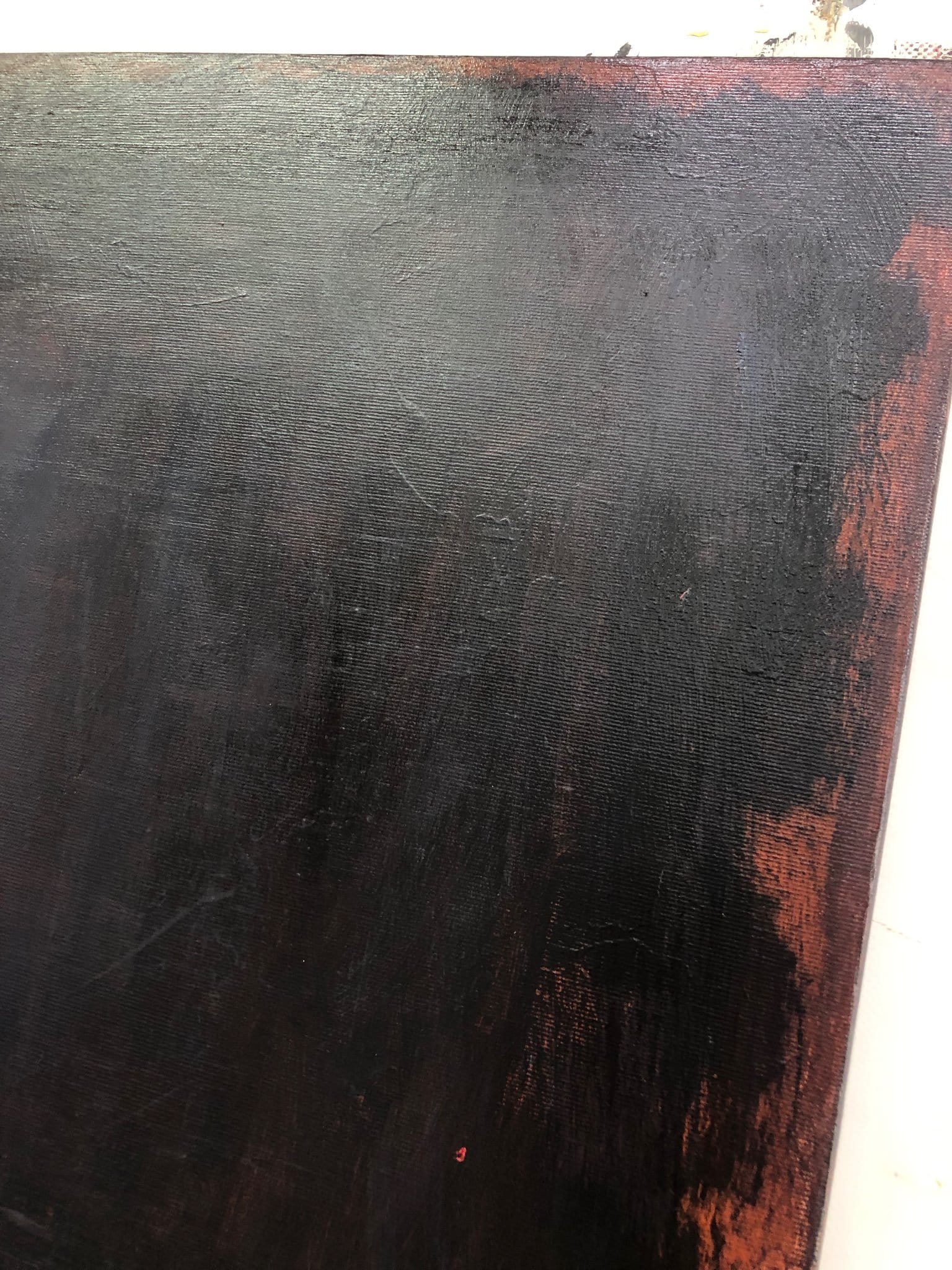
Black on Maroon painting is one of the abstract works inspired by Washington Color School ideas. Rothko created it during 1958-1959.
This work was displayed at the restaurant Four Seasons. The artwork represented as a rectangular shape canvas without frame. In this artwork you can see black color which applied over the deep maroon layer. This combination creates depth as well as unique color effect when intense wine shade blends with lilac together.
The maroon shades themselves are framed by the black making this effect even deeper

Untitled (Black on Grey) is another piece created by Rothko.
The artist considers this artwork as a representation of topic of death.
In this artwork, made in 1970, the artist uses two rectangles, which are empty and monochrome. Due to this color decision the viewers can feel the hues of uncertainty in this work

No. 61 (Rust and Blue) made according to the ideas of the Washington Color School. Its followers believed that the diversity of color shades used in the artwork as well as layering lead to the deepness of the artwork.
The artwork was created in 1953 and at the first sight you may consider it simple, but while checking closer you can observe the layering and colors variety specific to this School
Rothko`s admirers could notice that the artist loves inverting his works after they are done. That`s why in No. 61 painting you can notice the shades running up the canvas.

Completed in 1954, No. 1 (Royal Red and Blue) makes use of vibrantly bright colors such as oranges and reds, perfectly counterbalanced by the deep blues at the base of the painting.
The design of the work gives those viewing it the feeling that it is being illuminated, although this is not the case.
This abstract work also follows the Washington Color School movement, and Rothko’s ability to deal with and present abstract expressionism with so much ambiguity is on display here also. £47.2 million pounds is the value this piece was sold for during an auction in 2012.

The Color Field movement ideas are reflected in the 1962 oil painting Blue and Grey.
In many of his paintings, Rothko is thought to have followed a habit of covering the entire canvas with squares of vibrant colors, usually using the hues that he found to be lovely.
Much of his abstract expressionism artworks capture a wide range of human emotions. The underlying human sentiments of loneliness, despair, and misery are beautifully captured by Rothko in this painting more than in any other in his masterpieces.

This acrylic on canvas painting, suitably labeled Orange, Red, and Yellow, is one of Rothko's abstract expressions and is a striking sight.
The painting's sale for $70 million at an auction in 2012 is as astounding. Some viewers claim that this artwork is one of the most stunning because of the red background and the yellow and orange rectangles, which, although being straightforward, are able to quickly grab your attention.
The color scheme has been compared by some as a brilliant sunset or a bowl of vibrant ice cream. Rothko accomplished this by laying down numerous, thin layers of paint and then unevenly distributing it with his brush.

In painting White Center created in 1950, Rothko included elements of the Color Field and Washing Color School movements.
It`s one of his most expensive works of art. This oil painting on canvas cost $72.84 million and was sold to the Qatar Royal family.
On a rose-red background, Rothko brilliantly combines the hues of yellow, pink, and lavender to create an image that exudes warmth, brightness, and excitement to everyone who sees it.2

Some of Rothko's abstract expressionist works use shades of blue, green, and brown. This painting was finished in 1952 and features rectangular dark green and brown images on a blue backdrop.
This oil painting on canvas uses a sophisticated color scheme to produce a striking, distinctive, and realism image for the viewer to enjoy.2

For its design, Green and Tangerine on Red incorporates elements from several different artistic movements, including abstraction, Color Field, and the Washington Color School movements.
This oil painting, which was finished in 1956, has vivid tangerine hues in contrast with dark green on a red backdrop.
Some art experts contend that while the green portion of the piece of work reflects the anxiety and suffering that threatens to overwhelm us all, the brightness of the tangerine color represents the joys of human life.2

This painting was created in 1968, and it`s one of Rothko's abstract expressionist works.
The painting was created with oil on canvas and features a white backdrop with vivid green and blue accents.
Another one of Rothko's timeless masterpieces, this one features two green squares that are connected in the middle by a blue rectangle.2

Rothko used an uneven distribution of violet and green across the red background of the canvas in this abstract painting, which was finished in 1951.
The use of oil on canvas by the artist, together with the hazy nature of the oil colors he used, adds to the painting's impression of ambiguity when viewed. This painting costed 140 million euros to buy in 2014.2

Entrance to Subway is a representative of the expressionism and historical painting artistic movements, making it perhaps the least confusing piece on the list.
This work of art was painted in 1938 as a result of Rothko's exposure to Fantastic Art, Dada, Surrealism, Cubism, and Abstract Art shows. The passengers that are waiting on the platforms are what Rothko is most interested in, and his artwork depicts them as being tall and stick-like.
The subway is unusual in that it is empty and the characters are by themselves rather than the bustle of a crowd.




































